of 1916-18, but whose vivid personality and writings, along with the extraordinary breadth and variety of his activities and associations, have made him the object of fascination throughout the world as "
".
Lawrence's public image was due in part to U.S. traveller and journalist
' sensationalised reportage of the Revolt, as well as to Lawrence's autobiographical account,
.
Main article: Arab Revolt Arab Revolt Immediately after the war, Lawrence worked for the
Foreign Office, attending the
Paris Peace Conference between January and May as a member of Faisal's delegation.
Lowell Thomas's film was seen by four million people in the post-war years, giving Lawrence great publicity.
Post-war years A few weeks after leaving the service, aged 46, he was fatally injured in a
motorcycle accident in
Dorset, close to his cottage,
Clouds Hill, near
Wareham (now run by the
National Trust and open to the public). The accident occurred because of a dip in the road that obstructed his view of two boys on their bicycles; he swerved to avoid them, lost control, and was thrown over the handlebars of his motorcycle. He died six days later.
Some sources mistakenly claim that Lawrence was buried in
St Paul's Cathedral; in reality, only a bust of him was placed in the
crypt. His actual final
resting place is the
Dorset village of
Moreton. Moreton Estate, which borders Bovington Camp, was owned by family cousins, the Frampton family. Lawrence had rented and subsequently purchased
Clouds Hill from the Framptons. He had been a frequent visitor to their home, Okers Wood House, and had for many years corresponded with Louisa Frampton.
On Lawrence's death, his mother wrote to the Framptons; due to time constraints, she asked whether there was space for him in their family plot at Moreton Church. At his subsequent
funeral there, attendees included
Winston and
Clementine Churchill and Lawrence's youngest brother, Arnold (who demonstrated the Lawrencian dry humour in speaking with reporters), and T.E. Lawrence's coffin was transported on the Frampton estate
bier.
Death Throughout his life, Lawrence was a prolific writer. A large proportion of his output was
epistolary; he often sent several letters a day. Several collections of his letters have been published. He corresponded with many notable figures, including
George Bernard Shaw,
Edward Elgar,
Winston Churchill,
Robert Graves and
E.M. Forster. He met
Joseph Conrad and commented perceptively on his works. The many letters that he sent to Shaw's wife, Charlotte, offer a revealing side of his character.
In his lifetime, Lawrence published four major texts. Two were
translations:
Homer's
Odyssey, and
The Forest Giant – the latter an otherwise forgotten work of
French fiction. He received a flat fee for the second translation, and negotiated a generous fee plus royalties for the first.
Writings Lawrence's major work is
Seven Pillars of Wisdom, an account of his war experiences. In 1919 he had been elected to a seven-year research fellowship at
All Souls College, Oxford, providing him with support while he worked on the book. In addition to being a memoir of his experiences during the war, certain parts also serve as essays on
military strategy, Arabian culture and geography, and other topics. Lawrence re-wrote
Seven Pillars of Wisdom three times; once "blind" after he lost the
manuscript while changing trains in Reading.
The accusation that Lawrence repeatedly exaggerated his feats has been a persistent theme among commentators. This left Lawrence in substantial debt.
Seven Pillars Revolt in the Desert was an abridged version of
Seven Pillars, also published in 1926. He undertook a needed but reluctant publicity exercise, which resulted in a best seller. Again, he vowed not to take any fees from the publication, partly to appease the subscribers to
Seven Pillars who had paid dearly for their editions. By the fourth reprint in
1927, the debt from
Seven Pillars was paid off. As Lawrence left for military service in
India at the end of
1926, he set up the "Seven Pillars Trust" with his friend
DG Hogarth as a trustee, in which he made over the copyright and any surplus income of
Revolt in the Desert. He later told Hogarth that he had "made the Trust final, to save myself the temptation of reviewing it, if
Revolt turned out a best seller."
The resultant trust paid off the debt, and Lawrence then invoked a clause in his publishing contract to halt publication of the abridgement in the
UK. However, he allowed both American editions and translations which resulted in a substantial flow of income. The trust paid income either into an educational fund for children of
RAF officers who lost their lives or were invalided as a result of service, or more substantially into the
RAF Benevolent Fund set up by
Air-Marshal Trenchard, founder of the RAF, in 1919.
Revolt He also authored
The Mint, a memoir of his experiences as an enlisted man in the
Royal Air Force. Lawrence worked from a notebook that he kept while enlisted, writing of the daily lives of enlisted men and his desire to be a part of something larger than himself: the
Royal Air Force. The book is stylistically very different from
Seven Pillars of Wisdom. It was published posthumously, edited by his brother, Prof.
A.W. Lawrence.
After Lawrence's death, his brother inherited all Lawrence's estate and his copyrights as the sole beneficiary. To pay the inheritance tax, he sold the
U.S. copyright of
Seven Pillars of Wisdom (subscribers' text) outright to
Doubleday Doran in 1935. Doubleday still controls publication rights of this version of the text of
Seven Pillars of Wisdom in the USA. He then in 1936 split the remaining assets of the estate, giving "Clouds Hill" and many copies of less substantial or historical letters to the nation via the
National Trust, and then set up two trusts to control interests in Lawrence's residual copyrights. To the original Seven Pillars Trust he assigned the copyright in
Seven Pillars of Wisdom, as a result of which it was given its first general publication. To the Letters and Symposium Trust, he assigned the copyright in
The Mint and all Lawrence's letters, which were subsequently edited and published in the book
T. E. Lawrence by his Friends (edited by A.W. Lawrence, London, Jonathan Cape, 1937).
A substantial amount of income went directly to the RAF Benevolent Fund or for archaeological, environmental, or academic projects. The two trusts were amalgamated in 1986, and, on the death of Prof. A.W. Lawrence, also acquired all the remaining rights to Lawrence's works that it had not owned, plus rights to all of Prof. Lawrence's works.
Posthumous As was common for his class and generation, Lawrence did not discuss his sexual orientation or sexual practices, and his actual orientation and experiences are debated. Writers working to elucidate the history of
same-sex erotic relationships identify a strong homoerotic element in Lawrence's life, while scholars, including his official biographer, have been accused of "attempt[ing] to defend Lawrence against 'charges' of homosexuality." In the book
T.E. Lawrence by His Friends, many of Lawrence's friends are adamant that he was not homosexual but simply had
little interest in the topic of sex. Not one of them suspected him of homosexual inclinations. Like many men of the time, T.E. Lawrence had little pressure to pursue women, and most of his time was devoted to other activities. E.H.R. Altounyan, a close friend of Lawrence, wrote the following in
T.E. Lawrence by His Friends:
"Women were to him persons, and as such to be appraised on their own merits. Preoccupation with sex is (except in the defective) due either to a sense of personal insufficiency and its resultant groping for fulfilment, or to a real sympathy with its biological purpose. Neither could hold much weight with him. He was justifiably self sufficient, and up to the time of his death no woman had convinced him of the necessity to secure his own succession. He was never married because he never happened to meet the right person; and nothing short of that would do: a bald statement of fact which cannot hope to convince the perverse intricacy of the public mind."
Sexuality A map of the
Middle East that belonged to Lawrence has been put on exhibit at the
Imperial War Museum in London. It was drafted by him and presented to Britain's War Cabinet in November 1918.
The map provides an alternative to present-day borders in the region, based on the sensibilities of the local populations. It includes a separate state for the
Armenians and groups the people of present-day
Syria,
Jordan and parts of
Saudi Arabia in another state, based on
tribal patterns and
commercial routes.
Vision of Middle East This article contains a trivia section. The article could be improved by integrating relevant items into the main text and removing inappropriate items. Trivia
The article could be improved by integrating relevant items into the main text and removing inappropriate items. Trivia According to Lawrence's RAF enlistment medical file of
March 12,
1923, he was 5 ft 5.5 in (1.66 m) tall, weighed 130 lb (59 kg), had "scars on his buttocks", "three superficial scars on lower part of his back" and "four superficial scars left side." He was also circumcised.
One of his favourite weapons was a Colt
Peacemaker revolver. As recounted in Thomas's
With Lawrence In Arabia, Lawrence, while on a pre-war archaeological trip to Mesopotamia, was attacked by an Arab bandit intent on stealing his gun. However, the Arab did not understand the revolver's firing mechanism, and was forced to leave Lawrence unconscious but alive. After this incident, Lawrence's weapon of choice was the Peacemaker, and he almost always carried one for good luck. Lawrence was also known to carry a
Broomhandle Mauser, and later, a
Colt M1911 semi-automatic.
His
SMLE Mk III rifle, given to him by Emir Feisal, is on display in the Imperial War Museum, London.
Military Portrayed twice on film, by
Peter O'Toole in
Lawrence of Arabia and in a made-for-TV movie,
A Dangerous Man: Lawrence After Arabia (1990), by
Ralph Fiennes, both of whom are much taller than the real Lawrence: O'Toole stands 6'3" (1.90 metres) while Fiennes stands 6'1" (1.85 m).
Alec Guinness was considered for the title role in the first film, but was passed over as too old, despite the latter having been of an age with Lawrence. He did, however, play Emir Faisal in that film.
He was portrayed a third time on film in the 1992 TV series
The Young Indiana Jones Chronicles, by actors
Joseph Bennett and
Douglas Henshall.
Film Lawrence was also the subject of
Terrence Rattigan's controversial play
Ross, which explored Lawrence's alleged homosexuality.
Ross ran in 1960-61, starring
Alec Guinness, an admirer of Lawrence's. The play had originally been written as a screenplay, but the planned film was never made.
Alan Bennett's
Forty Years On (1968) includes a satire on Lawrence; known as "Tee Hee Lawrence" because of his high-pitched, girlish giggle. "Clad in the magnificent white silk robes of an Arab prince ... he hoped to pass unnoticed through London. Alas he was mistaken." The section concludes with the headmaster confusing him with
D.H. Lawrence.
The character of Private Napoleon Meek in
George Bernard Shaw's 1931 play
Too True to Be Good was inspired by Lawrence. Meek is depicted as thoroughly conversant with the language and lifestyle of tribals. He repeatedly enlists with the army, quitting whenever offered a promotion.
T.E. Lawrence's first year back at Oxford after the Great War to write his
Seven Pillars of Wisdom was portrayed by Tom Rooney in a play,
The Oxford Roof Climbers Rebellion, written by Canadian playwright Stephen Massicotte (premiered Toronto 2006). The play explores Lawrence's political, physical and psychological reactions to war, and his friendship with poet Robert Graves.
Lawrence's final years are portayed in a one-man show by Raymond Sargent, "The Warrior and the Poet."
Travel Oxford legend holds that, while an undergraduate at
Jesus College, Lawrence crept into the
deer park of
Magdalen at night and stole a deer; by the morning, he had managed to transfer the deer to the front quad of
All Souls, the college which is normally off limits for undergraduates.
At the time Lawrence was going under the name Shaw, and signing himself, for example in the guest book at
Philip Sassoon's
Port Lympne estate, as "338171 A/C Shaw".
Noel Coward in a letter to him asked "May I call you 338?"
Other Hashemite Kingdom of Jordan Kingdom of Iraq Assassinations in fiction Bibliography General references:
Desmond Stewart,
T. E. Lawrence, New York, Harper & Row Publishers, 1977
Flora Armitage,
The Desert and the Stars: a Biography of Lawrence of Arabia, illustrated with photographs, New York, Henry Holt, 1955.
Victoria K. Carchidi,
Creation Out of the Void: the Making of a Hero, an Epic, a world: T.E. Lawrence, 1987 diss., U. Pennsylvania (Ann Arbor, MI University Microfilms International).
Robert Graves,
Lawrence and the Arabian Adventure, New York, Doubleday, Doran, 1928.
George Amin Hoffman,
T. E. Lawrence (Lawrence of Arabia) and the M1911.
John E. Mack,
A Prince of Our Disorder: The Life of T. E. Lawrence, Boston, Little, Brown, 1976,
ISBN 0-316-54232-6.
Victoria Ocampo,
338171 T.E. (Lawrence of Arabia), 1963.
Charles M. Stang, editor,
The Waking Dream of T. E. Lawrence: Essays on His Life, Literature, and Legacy, Palgrave Macmillan, 2002
Desmond Stewart,
Lawrence von Arabien: Magier und Abenteurer (Lawrence of Arabia: Magician and Adventurer), Munich, Wilhelm Heyne Verlag, 1991 (
ISBN 3-453-55093-5).
Jeremy Wilson,
Lawrence of Arabia: The Authorised Biography of T.E. Lawrence, 1989,
ISBN 0-689-11934-8.

 Inter-faith disputations
Inter-faith disputations
 Writing
Writing Notes
Notes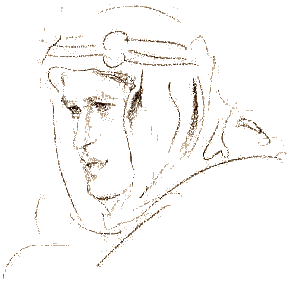 Early years
Early years The article could be improved by
The article could be improved by 


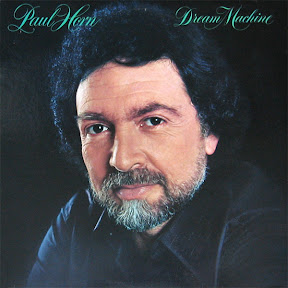

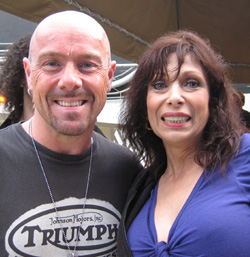

 Relations with other gangs
Relations with other gangs Types
Types
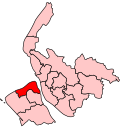
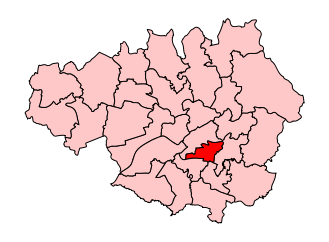 Members of Parliament
Members of Parliament
